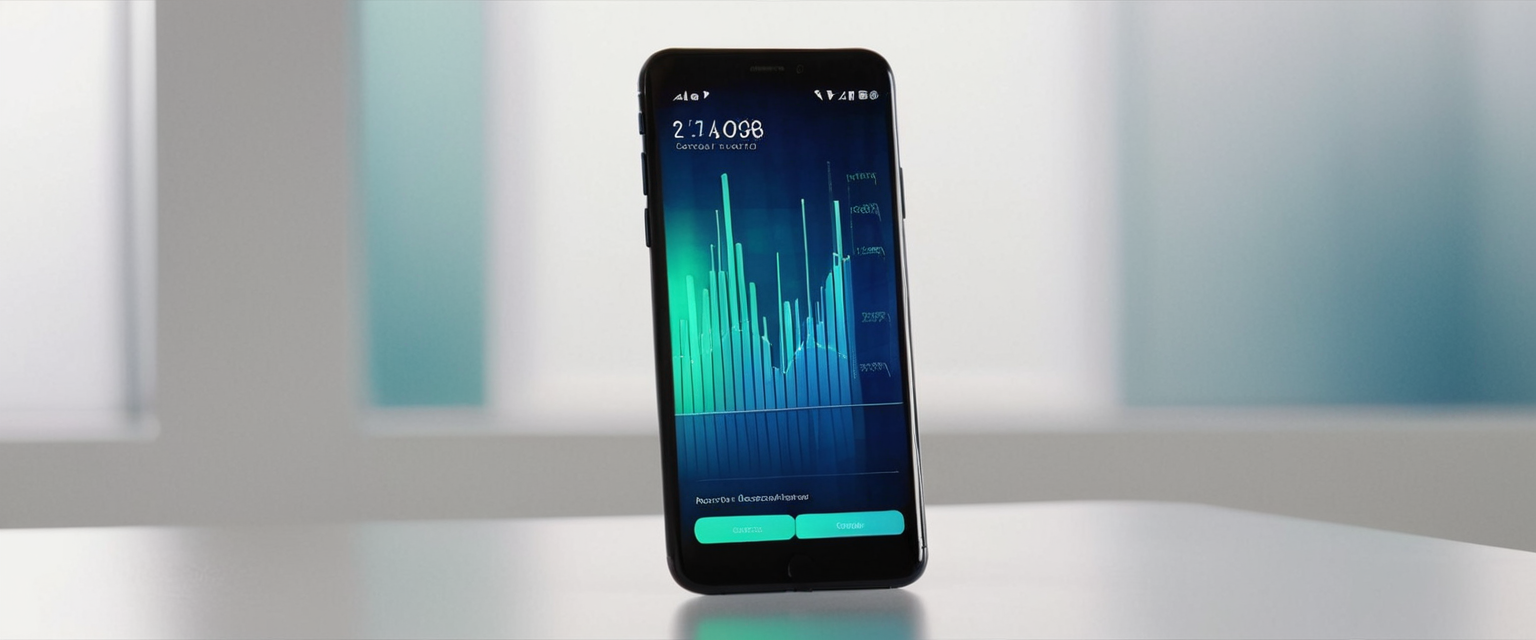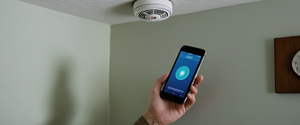
Modern mobile devices have implemented visual indicators to alert users when applications access sensitive hardware resources like cameras and microphones. These indicators represent a significant technological advancement in privacy protection, yet recent security research reveals substantial limitations in their effectiveness. This comprehensive analysis examines the implementation, reliability, and limitations of recording indicators across major mobile platforms, evaluates their effectiveness against sophisticated threats, and synthesizes current evidence about their role in defending user privacy. The evidence suggests that while recording indicators provide valuable baseline protection against casual privacy violations and basic malware, they create a false sense of security by failing to prevent numerous attack vectors, can be bypassed through technical exploits and legitimate system features, and remain largely ineffective during high-engagement user activities. This report synthesizes academic research, security vulnerability disclosures, and platform documentation to provide a detailed assessment of what users can reasonably rely upon when trusting these indicators to protect their privacy.
Visual Recording Indicators: Implementation and Design Across Major Platforms
Modern operating systems have gradually introduced visual feedback mechanisms to inform users when applications access camera and microphone hardware. These indicators represent a deliberate design choice to increase transparency and place the final enforcement of privacy at the user level. On iPhones running iOS 14 and higher, a green dot appears in the status bar when the camera is actively being accessed, while an orange dot indicates microphone activity. This design choice was implemented to provide users with immediate, always-visible feedback about hardware access. Similarly, on Android devices running version 12 and higher, a green indicator appears in the top-right corner of the screen when either the camera or microphone is in use. The Android implementation goes further by requiring that indicators appear in the status bar with the highest visual priority, maintaining consistent positioning, and displaying in a consistent green color across all devices as a mandatory requirement for original equipment manufacturers.
The technical implementation of these indicators involves multiple system components working in concert. On Android, the system tracks what are known as “app-ops,” which record accesses to runtime permission-protected APIs. When an application requests microphone or camera access through the proper system APIs, the system notes this usage in app-ops and coordinates with the system user interface to display the corresponding indicator. Users can tap these indicators to view a notification showing which applications currently access their data, and the system maintains a record of which applications accessed camera or microphone within the preceding fifteen seconds. This architecture creates a clear chain: application requests data, system validates permissions, system logs the access, and system user interface displays the indicator.
Desktop computers similarly incorporate recording indicators, though with varying degrees of sophistication. On newer MacBooks, a green light appears next to the camera when it is powered on, and a microphone icon appears in the status bar. Windows computers display camera and microphone icons in the taskbar when applications use these resources. Some Windows laptop manufacturers include built-in hardware lights similar to the MacBook design. The MacBook implementation is particularly significant because Apple has made specific engineering choices to tie the camera indicator light to hardware signals rather than software control, creating what proponents argue is an unbypassed system.
Fundamental Limitations: Legitimate Features That Bypass Recording Indicators
One of the most critical reliability problems with recording indicators stems from the existence of legitimate system features that access microphones without triggering the visual indicators users rely upon. These are not security vulnerabilities in the traditional sense, but rather designed behaviors that create privacy gaps. The most prominent example is voice assistant activation. When a user says “Hey Siri” on an iPhone or “Ok Google” on an Android device, the device must continuously listen for the activation phrase, yet this constant monitoring does not trigger the microphone indicator dot that users expect to see. The phone’s microphone is actively processing audio in real time, analyzing it for wake words, and yet no orange dot appears to alert the user that their voice is being captured and analyzed.
This creates a fundamental problem for the reliability model upon which recording indicators are based. If the microphone can be actively processing the user’s voice without the indicator appearing, then the absence of an indicator does not actually mean the microphone is not in use. The system architecture that enables wake-word detection requires constant microphone access without user-visible feedback. Research into iOS’s internal structures reveals that features like “Hey Siri” rely on the CoreSpeech framework, specifically a daemon called corespeechd that uses VoiceTrigger.framework to continuously monitor the user’s voice for keyword detection. This architecture is by design—the voice assistant must listen passively to be responsive to user commands. However, from a privacy perspective, this means that users cannot rely on the absence of indicators as proof that their microphone is not being accessed.
Additional legitimate features bypass indicators in similar ways. On iOS, the Accessibility feature “Voice Control” allows users to interact with their devices through voice commands, and the system responsible for this functionality, SpeechRecognitionCore.speechrecognitiond, accesses the microphone without triggering the green or orange indicator. Switch Control, another accessibility feature designed to detect head movement for users with motor disabilities, accesses camera input without triggering indicators. These are not bugs or security flaws—they are intentional design decisions. Voice assistants must listen passively to be useful, and accessibility features must operate in the background to serve their intended users. Yet this means the privacy model represented by the indicators is incomplete from inception.
Android devices face a similar problem through features like “Live Caption” and “Live Transcribe,” which provide real-time transcription of audio in the environment. These accessibility features can operate in the background, continuously capturing and analyzing audio, without displaying the microphone indicator. The system documentation reveals that these features, along with call transcription and emotion detection, can be active simultaneously, analyzing user speech and detecting emotional tone, all while operating silently without notification or indicator. Users may be unaware that their device is not just passively monitoring but actively performing sophisticated voice analysis in the background.
Technical Exploitation: Advanced Threats Demonstrating Indicator Unreliability
Beyond legitimate features that bypass indicators, security research has documented techniques by which malicious actors can deliberately circumvent recording indicators through technical exploits. Research into high-end spyware platforms like NSO Group’s Pegasus has revealed that sophisticated malware can inject itself into system daemons responsible for privacy controls, enabling camera and microphone access that does not trigger the visual indicators. The technical mechanism involves understanding iOS’s internal architecture for managing access to protected resources.
iOS uses a system daemon called tccd (Transparency, Consent, and Control daemon) that controls access to private data and authorization to gather personal information from input sources like the microphone and camera. Applications must request permission through tccd before accessing protected resources. However, the system that controls indicators and the system that controls actual access are not perfectly aligned. Researchers have documented that malware can inject code into system daemons like SpeechRecognitionCore.speechrecognitiond or AccessibilityUIServer to enable silent access to the microphone without triggering TCC prompts or visual indicators. By latching into the same system processes that legitimately access the microphone for voice commands or accessibility features, malware can perform hidden recording without the obvious indicators appearing.
Camera access presents additional complexity. Camera access requires approval not just from tccd but also from another daemon called mediaserverd, which monitors media capture sessions and enforces the rule that background processes cannot access the camera. When mediaserverd detects a process is running in the background, it automatically revokes camera access. However, researchers have shown that by injecting code into mediaserverd itself through the low-level debugger lldb, attackers with sufficient privileges can prevent mediaserverd from revoking camera access for background processes, enabling silent background video recording. The key technical insight is that these daemons are responsible for both enforcing privacy and triggering the indicators. If the daemon itself is compromised, it cannot reliably trigger indicators about its own malicious behavior.
Protect Your Digital Life with Activate Security
Get 14 powerful security tools in one comprehensive suite. VPN, antivirus, password manager, dark web monitoring, and more.
Get Protected NowRecent vulnerability disclosures have further demonstrated the fragility of the privacy framework underlying recording indicators. A vulnerability tracked as CVE-2024-44131 in Apple’s FileProvider component created a race condition that allowed malicious applications to intercept file operations and exploit symbolic links to bypass the entire TCC framework without triggering any user prompts or alerts. This vulnerability demonstrates that the privacy framework itself can contain fundamental flaws that allow complete circumvention of all privacy controls, including the indicators, without users seeing any warnings.
Even more recently, security researchers documented undocumented system behavior in iOS 18.6 where trusted Apple daemons bypass TCC to access protected data, modify sensitive settings, and transmit network data silently without appearing in any UI or privacy settings. The technical analysis revealed that tccd was silently accessing protected services with special parameters, other daemons were activating Mach and XPC communication, and approximately 5MB of data was being transmitted over the network through system daemon coordination—all with no user prompt, no app context, and no visibility in privacy settings. This represents a fundamental undermining of the assumptions behind the TCC privacy framework and the indicators based on it.

Platform-Specific Vulnerabilities and Workarounds
Android’s privacy indicator system, while more recent than iOS, faces distinct vulnerability vectors. Academic research has specifically analyzed attacks against Android’s privacy indicators, documenting novel techniques by which indicators can be masked or hidden during sensitive device usage. One particularly concerning finding is that UI overlay attacks can hide privacy indicators: in a user study involving 44 participants, only 13.6 percent recognized the indicator when subjected to UI overlay attacks, compared to 63.6 percent under normal conditions. This means that malicious applications can simply draw a user interface element on top of the privacy indicator, effectively rendering it invisible to the user. The indicator is still technically there, controlled by the system, but the user cannot see it because another application has drawn over it.
Users seeking to disable Android privacy indicators have discovered technical methods to do so, demonstrating that the indicators themselves can be deactivated through development mode commands. While these methods generally require enabling developer options and using platform tools—steps that would likely prevent most casual users from attempting them—the existence of these workarounds demonstrates that the indicators are not immutable system features but rather configurable settings that can be altered. Furthermore, research indicates that these workarounds were patched in Android 16, but the ease with which they existed in earlier versions demonstrates the fragility of the protection model.
iOS’s indicator system benefits from being more deeply integrated into the operating system’s core, making workarounds more difficult. However, the fundamental problem remains that legitimate system features create unavoidable exceptions to the indicator model. Jailbreaking an iOS device—unauthorized modification of iOS that bypasses security features—can theoretically disable indicators, though this requires users to voluntarily compromise their device security. The more concerning reality is that users might not need to jailbreak their devices for their privacy to be compromised; rather, sophisticated attackers with kernel-level code execution can already accomplish much of what jailbreaking enables, including potential indicator circumvention.
User Behavior and Effectiveness Research: The Gap Between Design Intent and Reality
Academic research examining how users actually perceive and respond to recording indicators reveals significant gaps between the design intentions and real-world effectiveness. Eye-tracking studies examining how users interact with Android’s privacy indicators found that while these visual alerts are theoretically effective, they fail to capture user attention consistently, particularly during high-engagement tasks. The research employed eye-tracking technology to observe where users’ visual focus was directed while they used their devices, and the findings revealed “a significant gap in PIs effectiveness, particularly in high-engagement tasks, indicating a need for more eye-catching privacy notifications”.
The implications of this research extend beyond the technical design of the indicators themselves. Users do not spend their days staring at the status bar; they are engaged in their applications, reading content, or interacting with interfaces. When their cognitive load is high, they are unlikely to notice an additional visual indicator in the status bar, regardless of how prominent its intended placement is. The research found that different indicator designs had varying effectiveness: a “Disk” indicator with dynamic animation demonstrated higher efficacy in catching user attention in low-attention scenarios compared to the standard indicator design, but the effectiveness of these animated alternatives in high-attention tasks remained limited, indicating a fundamental challenge in alerting users during periods of high cognitive engagement.
Additional research into audio-related privacy perceptions found that users fall into distinct categories in their relationship with privacy controls: “guardians” who actively manage privacy, “pragmatists” who accept some trade-offs, and “cynics” who assume their data is already compromised. This research indicates that recording indicators are likely to be most effective for the guardian category, somewhat effective for pragmatists who might occasionally check them, and essentially ineffective for cynics who may not even notice them. The assumption that a universal visual indicator would effectively protect all users fails to account for this diversity of user behaviors and attitudes toward privacy.
Furthermore, users have discovered that they can manipulate their own perception of indicators. Some users mention disabling notifications or intentionally ignoring them to reduce distraction, which paradoxically makes them even less aware of when their sensitive hardware is being accessed. The phenomenon of “notification blindness” documented in mobile app research applies directly to privacy indicators—after seeing repeated notifications, users develop the ability to ignore them, effectively rendering indicators invisible through habituation.
The Reliable Core: What Recording Indicators Actually Provide
Despite the significant limitations documented above, recording indicators do provide meaningful protection against certain categories of threats. Most applications cannot access the camera or microphone without explicit permission, and when such access occurs through the normal permission system, indicators will display. This means that recording indicators effectively prevent casual privacy violations from applications that legitimately request permissions. If an application makes an unauthorized camera access attempt, it will either fail because the permission is not granted, or it will succeed and trigger the indicator.
The practical implication is that recording indicators are most reliable as protection against human error or application misbehavior rather than as protection against sophisticated adversaries. If a user accidentally forgets to close FaceTime or Zoom, the indicator will remind them. If a developer inadvertently leaves a recording feature active, the indicator will reveal this. If a user installs an application from an untrusted source that attempts to access the camera, the indicator will show this. These are valuable protections addressing realistic threats to most users.
Security professionals recommend treating indicators as one layer of defense rather than as complete protection. One security expert quoted in consumer reports guidance states, “Some advanced actors can do more than the average consumer can protect against, but the dangers are not as significant unless you’re a highly valued target”. This accurately captures the threat model that indicators are designed for: they protect ordinary users from ordinary threats, but they are not designed to protect against nation-state adversaries or the most sophisticated malware platforms.

The Role of System Updates and Security Patches
The reliability of recording indicators depends significantly on the underlying operating system security and the frequency with which vulnerabilities are patched. Apple’s control over iOS updates and rapid deployment across all compatible devices means that security issues affecting indicators tend to be addressed relatively quickly through mandatory updates. Android’s more fragmented update landscape creates a more challenging situation, where some devices may not receive updates addressing indicator vulnerabilities for extended periods or may never receive them. Users of older Android devices may be running versions with known indicator bypasses.
The discovery of iOS 18.6’s silent TCC bypass and the FileProvider vulnerability demonstrate that even with security teams actively working on these systems, fundamental flaws can remain undetected. This suggests that there may be unknown vulnerabilities in current systems. Users updating their devices regularly benefit from patches addressing discovered vulnerabilities, but the vulnerability discovery process is reactive rather than proactive. Until a specific vulnerability is discovered and patched, devices remain vulnerable.
External Verification and Privacy Dashboard Features
Both iOS and Android provide mechanisms for users to independently verify application behavior beyond relying on real-time indicators. iOS provides a Privacy Dashboard accessible through settings, showing a timeline of when applications have accessed sensitive data over time. Android 12 and higher devices include a Privacy Dashboard that provides similar functionality, displaying separate screens showing when apps have accessed location, camera, and microphone information. These dashboards allow users to review historical access patterns and identify applications that access sensitive resources in unusual ways.
This historical view capability provides defense-in-depth: even if an indicator is missed in real-time or bypassed through a technical exploit, a user reviewing the privacy dashboard later might notice unusual access patterns that would trigger investigation. However, this defense requires users to actively check these dashboards, which many users do not routinely do. Research on privacy behaviors suggests that only security-conscious users regularly review permissions and privacy dashboards; most users interact with these settings only when prompted or when actively troubleshooting issues.
Hardware-Based Solutions: The Physics-Based Approach
Recognition of the limitations of software-based recording indicators has prompted exploration of hardware-based solutions that place physical barriers between sensors and potential recording. Apple’s design in modern MacBooks (since 2014) ties the camera indicator LED to a hardware signal from the camera sensor such that whenever the sensor has power, the LED lights up, with no firmware capability to disable the LED independently. This design choice makes it physically impossible to power the camera without also powering the indicator light. While theoretical attacks involving compromised firmware or kernel-level exploits might enable single-frame captures, any sustained recording would necessarily produce visible indication through the hardware LED.
More radical approaches include the Librem 5 phone and Librem laptops, which feature hardware kill switches that physically sever the circuit to the microphone and camera at the hardware level. When these switches are in the off position, no software—malicious, compromised, or otherwise—can activate the sensors because there is literally no electrical path to them. The NitroPhone represents another approach, offering the ability to physically remove microphones, cameras, and motion sensors during manufacturing, making eavesdropping physically impossible because the hardware components simply do not exist on the device. These hardware solutions demonstrate that complete protection against recording is possible, though at the cost of either significant inconvenience (physically toggling hardware switches) or permanent feature loss (removing sensors).

Recommendations and Best Practices
Effective protection against unauthorized recording requires a layered approach rather than reliance on indicators alone. Users should implement the following practices: first, regularly review app permissions and revoke camera and microphone access for applications that do not require these permissions for their core functionality. Second, disable voice assistants’ passive listening features if the constant listening is uncomfortable, acknowledging the trade-off of losing the convenience of wake-word activation. Third, keep operating systems and applications updated to current versions, as updates often include security patches addressing newly discovered vulnerabilities. Fourth, monitor the privacy dashboard regularly to review which applications have accessed camera and microphone resources.
For users with elevated threat models, additional protective measures become appropriate. Covering the camera with tape or a physical camera cover when not in use provides protection against camera access regardless of indicator status. Users might disable or restrict apps that request unnecessary permissions at install time, with the understanding that this is a less stringent approach than reviewing all permissions after installation. For maximum protection against sophisticated threats, users should consider devices designed with hardware security features, though the practical limitations and cost of these options mean they are primarily accessible to users with specific threat models and resources.
Securing Your Reliable Mobile Indicator Insights
Recording indicators on mobile devices represent a meaningful technological advancement in privacy protection, yet they are fundamentally incomplete as privacy safeguards. The evidence synthesized in this report reveals that indicators fail to provide complete protection due to legitimate system features that bypass them, technical vulnerabilities that enable circumvention, sophisticated malware techniques that exploit system architecture, user behavior patterns that reduce their effectiveness, and fundamental limitations in how attentively users monitor them.
However, this incomplete nature should not be interpreted as uselessness. Recording indicators effectively prevent casual privacy violations, accidental recording, and basic malware attacks. They provide transparency that was previously unavailable, allowing users to see when applications access sensitive resources. They create accountability by making privacy violations visible rather than invisible. They form a baseline protection that, while not foolproof, is substantially better than the absence of any indication.
The most accurate assessment is that recording indicators are reliable for their intended purpose of providing transparency about application behavior for ordinary users facing ordinary threats, but unreliable as the sole protection against sophisticated adversaries or nation-state-level threats. They should be understood as one component of a defense-in-depth approach rather than as a complete solution. Users should trust them for their intended purpose while understanding their limitations and supplementing them with regular permission reviews, updated software, and physical protections where appropriate. The future of privacy protection likely involves not replacement of indicators but rather improvement of the underlying systems they indicate—through improved software architecture that prevents bypass techniques, hardware integration that makes indicators tamper-proof, and user interface design that makes indicators more noticeable during high-cognitive-load activities.






